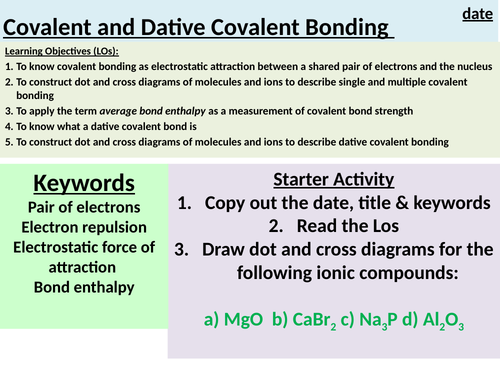

A structured KS5 lesson including starter activity, AfL work tasks and main work task all with answers on Covalent and Dative Covalent Bonding
By the end of this lesson KS5 students should be able:
- To know covalent bonding as electrostatic attraction between a shared pair of electrons and the nucleus
- To construct dot and cross diagrams of molecules and ions to describe single and multiple covalent bonding
- To apply the term average bond enthalpy as a measurement of covalent bond strength
- To know what a dative covalent bond is
- To construct dot and cross diagrams of molecules and ions to describe dative covalent bonding
Declaimer: Please refrain from purchasing this popular resource for an interview lesson or a formal observation. This is because planning your own lessons, including using your own lesson PowerPoints, is a fundamental skill of a qualified/unqualified teacher that will be assessed during the scenarios outlined above
Something went wrong, please try again later.
This resource hasn't been reviewed yet
To ensure quality for our reviews, only customers who have purchased this resource can review it
Report this resourceto let us know if it violates our terms and conditions.
Our customer service team will review your report and will be in touch.